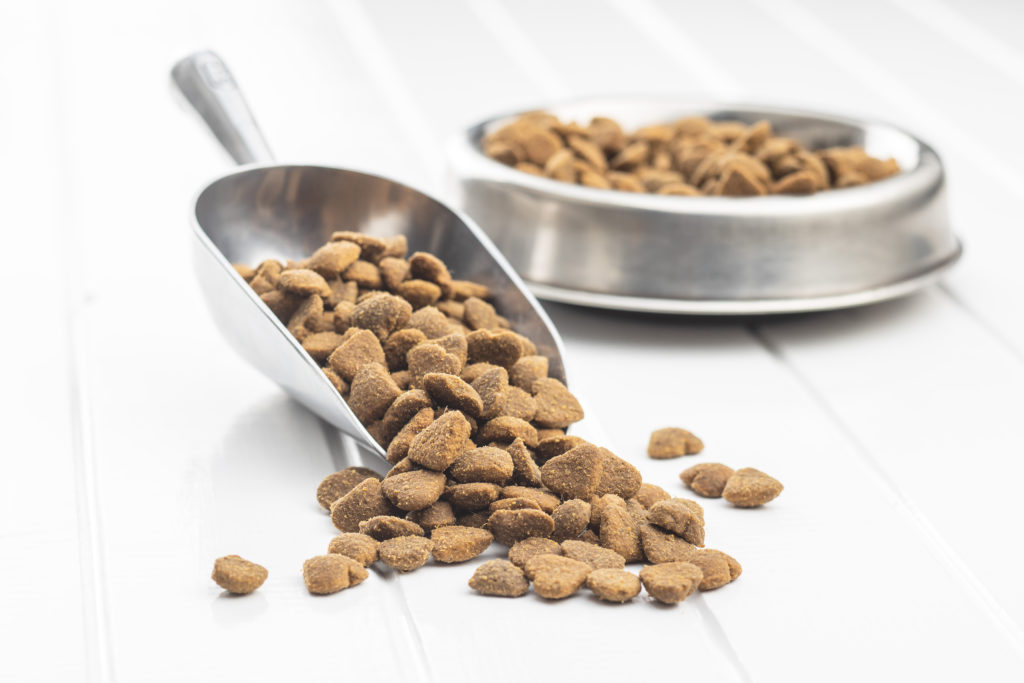What are the main pet food ingredients that pop into your mind? Chicken and beef? Maybe “white fish” for cats? They are still popular ingredients for most pet food brands. But premium and super-premium brands and health-conscious pet owners are increasingly interested in unique ingredients and sustainable proteins, such as tilapia, green beans and millet.
The growing popularity of unique ingredients is partly due to the humanization of pets. Some dog and cat owners, who follow a healthy, sustainable diet, want their pets’ diets to mimic their own nutrition choices.
Sustainability in the raising or farming process for proteins and other ingredients is driving popularity for some new ingredient options, including insects. Sustainable agriculture is often defined as low-carbon food production, with reduced growing or raising time, less water and space needs and a lower emission of greenhouse gases. More brands are focusing on sustainable ingredients as part of their value statement to consumers.
Another reason pet parents seek out unique (or novel) protein formulas is to help solve pet food sensitivities or allergies that results in itching, scratching, dry flaky skin and/or gastrointestinal upset. Dogs and cats may develop food sensitivities after eating the same food or protein for a long time. Allergic symptoms are often reduced or eliminated when a diet is changed to a novel (new to the animal) protein.
Benefits of Unique Proteins
While being less likely to trigger an allergic response, unique proteins also are typically healthier than mainstream proteins, providing more protein with less fat. Rabbit has less fat then chicken and pork, for example.
Rabbit, salmon, duck and lamb remain popular unique ingredients but are now seen as more mainstream proteins. For many brands they are popular ingredients, along with wild boar, buffalo and the resurgence of grass-fed beef.
A developing trend is specific marine proteins, such as pollock, halibut, sea bass, catfish, green-lipped mussels and tilapia. Brands and manufacturers are focusing on fish as a novel protein, and marine proteins are growing in popularity for canine diets. Expect to see less “whitefish” on food labels and more specific fish species listed.
Part of the interest in specific fish is that more pet parents want to know the exact ingredients in their dog or cat’s food. They want to understand the health benefits and the ingredient’s impact on the ecosystem.
Ancient Grains and Vegetables
While peas, chickpeas and potatoes have fallen out of favor as ingredients, they are being replaced with ancient grains like millet, oats, pearl barley and sorghum. The nutritional benefits of ancient grains vary but all are less processed than mainstream grains like corn.
Sweet potatoes remain popular, and rice is getting a second look since it is readily available worldwide and easily digestible.
Emerging vegetables that bring natural vitamins to a pet’s diet and reduce the need for artificial vitamins include broccoli, kales, green beans.
The Future
We have all seen a dog or cat gulp down an insect. If Americans can get over the “yuk” factor with insects, they are a good source of protein for pets and are very sustainable. “Crops” of crickets and mealworms are raised more quickly than chicken or steer. They use less water and take up less space.
Alphia, through our ingredient milling company LANI, continually investigates new ingredient options that will help determine the next “it” ingredient for the industry. With more than 800 high-quality ingredients from around the world available, Alphia works with each client to create quality, innovative products, value in the product and process and healthy pets.
